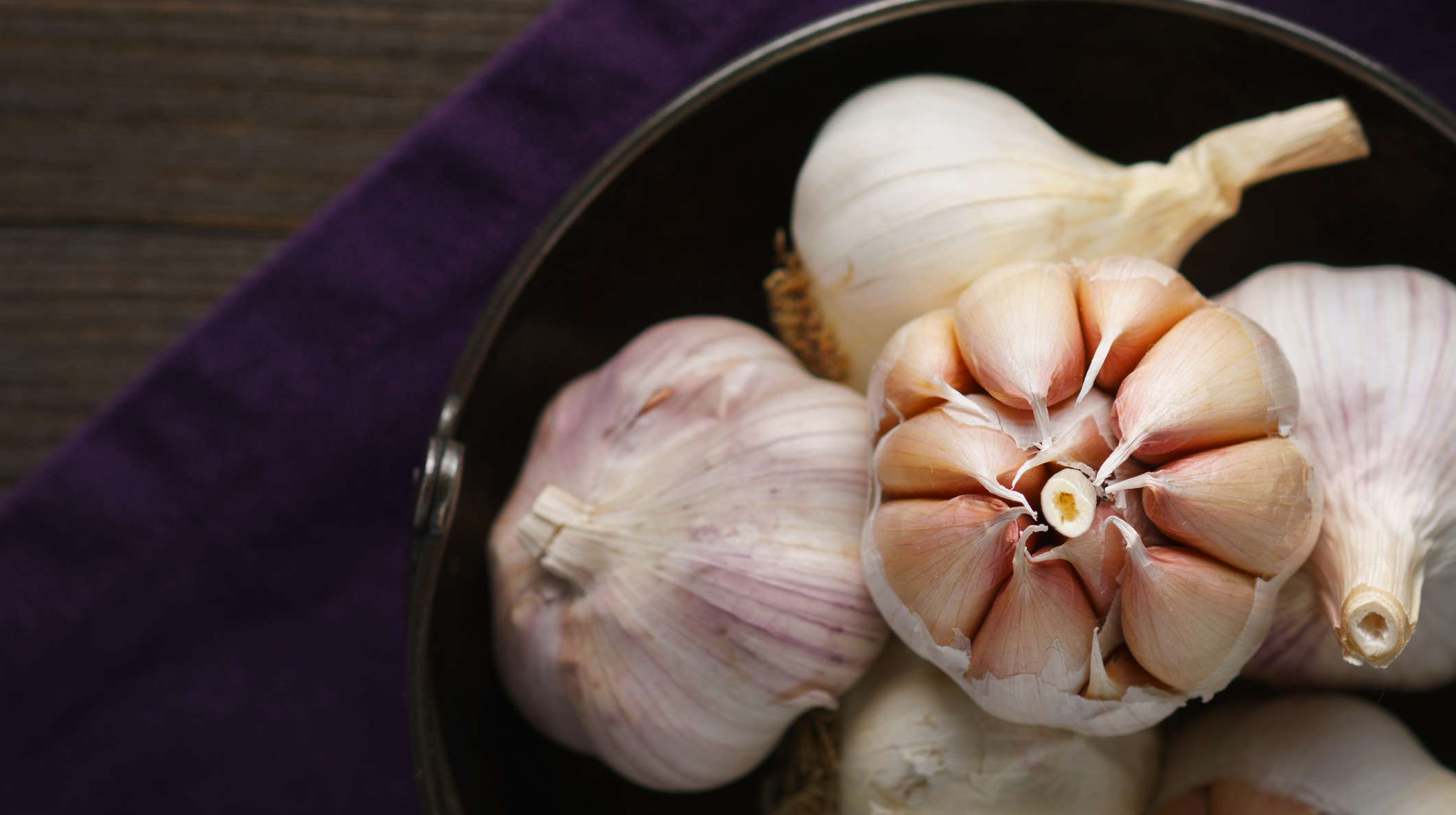How Is Hardneck Garlic Different?
Welcome to The Takeout's Garlic Week, our Valentine to the world's loveliest stink.
Hardneck and softneck garlic are both members of the genus allium and species sativum, but they're actually distinct subspecies, like wolves and domestic dogs. Hardneck garlic (allium sativum ophioscorodon) has a harder stalk protruding from its center, while cloves of softneck garlic (allium sativum sativum) are not clustered around such an interior shoot. It's quite obvious once you break or slice the head open. While this structure is the most obvious distinction, it's not the only one. If you love cooking with garlic, it's worth examining the specific traits of the two main types.
Before we dive into those, though, a quick detour regarding elephant garlic (allium ampeloprasum): though it's called garlic, it's actually a member of the leek family, with a much more mild flavor than we typically expect from garlic. Gurney's Seed & Nursery Co., an Indiana mail-order seed and plant company founded in 1866, describes elephant garlic as "big but biteless" in its spring 2019 catalog. Because elephant garlic isn't a true garlic, we'll leave the discussion there and move onward to the two major types of garlic, hardneck and softneck.
Garlic has been cultivated for thousands of years and is referenced by Egyptian and Greek artifacts dating back to earliest recorded history. Its original, wild territory was thought to span as far as present-day China to India to Ukraine. But just what type of garlic was original cultivated is unknown; Philipp Simon of the University of Wisconsin's Department of Horticulture notes that it wasn't until farmers began planting garlic in southern Europe within the last 1000 years that they recorded a difference between hardneck and softneck varieties.
Today, global garlic production has reached approximately 10 million metric tons annually, with mostly softneck ending up in grocery stores. But if you're at a farmer's market where both types are available, which should you choose for your own kitchen? The two subspecies vary in terms of number of cloves per head, ease of peeling and crushing, and flavor.

Cloves per head
As this simple chart from Mother Earth News summarizes, softneck garlic heads contain smaller cloves, usually a dozen or two per head, while hardneck garlic heads may contain as few as six much larger cloves. I've found in my own cooking that one hardneck clove is roughly the size of two or even three smaller ones. I happened to have both in my kitchen this week, so I weighed them:
Normal softneck clove: 5 gNormal hardneck clove: 11 g
Ease of peeling and crushing
The husks on a softneck bulb tend to be thinner and more papery, while the husks on a hardneck are more brittle and thick. For that reason, I prefer the ease of peeling hardneck garlic: there are fewer cloves and less papery-sticky skins. But when it comes to crushing a clove for use in a sauce or marinade, the hardneck ones sometimes take real muscle. Comparatively, I feel like the Hulk when I'm smooshing softneck ones.
Flavor
Here's where your preferences matter most. Softnecks are the de-facto garlic, the standard that most of us cook with, thus its garlic flavor is what I'd refer to as familiar, approachable, and warm. Hardnecks are prized for their more intense and complex flavors, which Cook's Illustrated deems "superior," and which I've sometimes found so pungent they make my eyes water when I chop them. I like the intensity of the latter, but try out both to determine your your allium allegiance.
